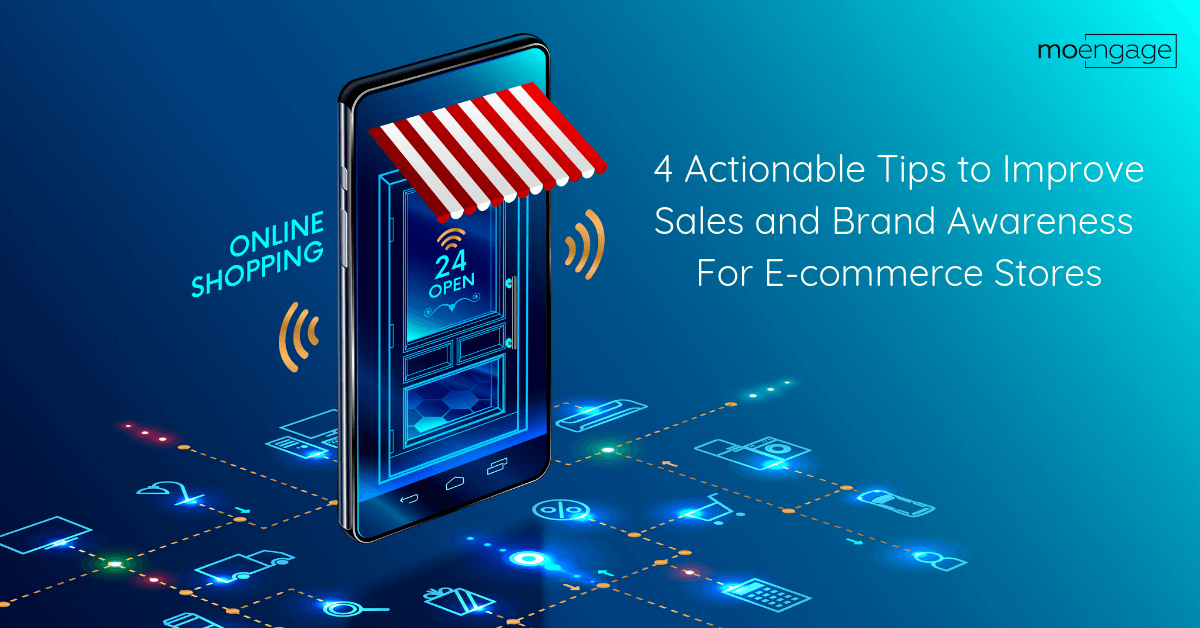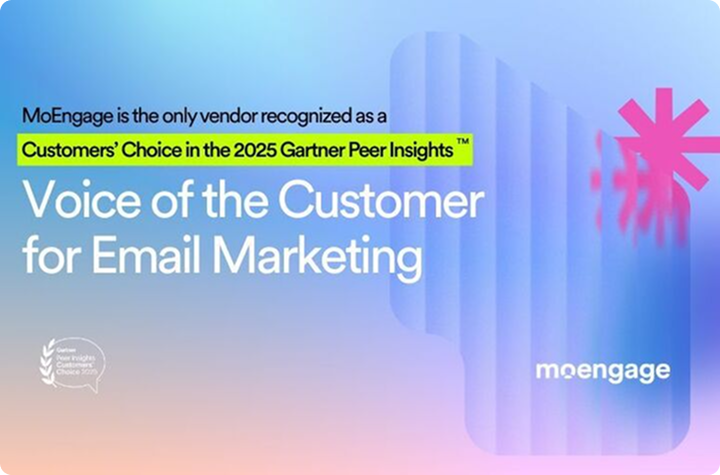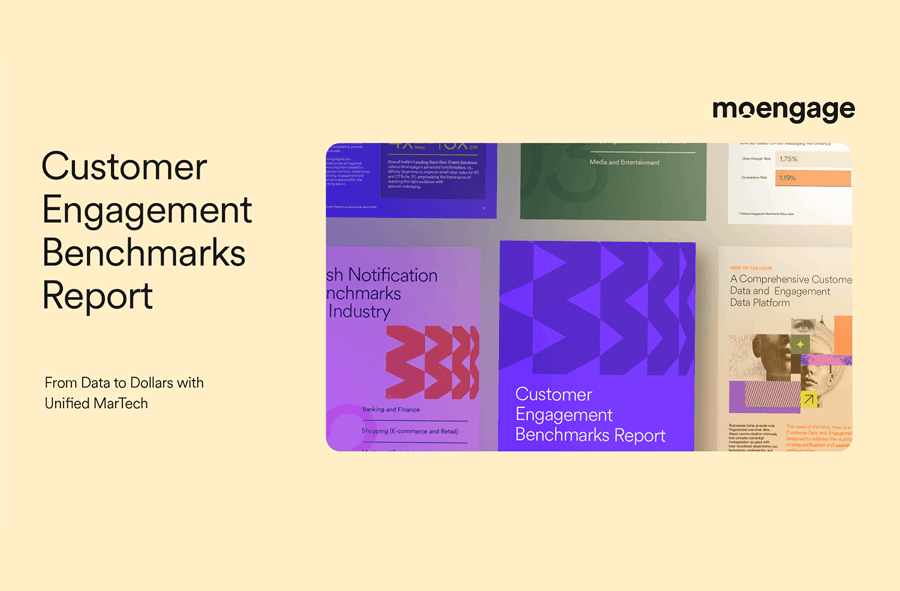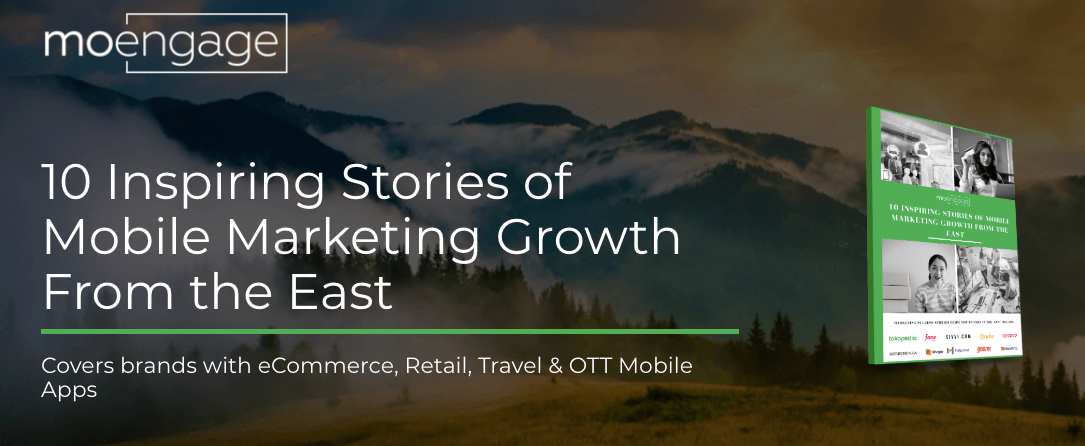4 Actionable Tips to Improve Online E-commerce Sales and Brand Awareness

Reading Time: 5 minutes
With the prevalence of online shopping, competition is no longer limited to physical stores and opening hours. Now it is dramatically expanding to the online environment, which in turn is forcing companies to rethink their strategy completely.
The introduction of technology in society, as well as the incorporation of digital narratives into the purchasing process, has meant that online commerce is experiencing exponential growth, both globally and locally.
|
Bonus Content 👉 The Complete Growth Strategy [Download Handbook] 👉 Beginner’s Guide to Omnichannel Marketing for 2021 [Download Ebook] 👉 Retail Strategies and Omnichannel Engagement Frameworks [Download Ebook] 👉 Customer Lifecycle Marketing Campaigns: An In-depth Guide [Download Ebook] |
What they want to sell, to whom will they sell it, and how will they manage it – these three questions need answers from all companies that intend to use technology to keep growing. Remember, having an online store is almost a necessity now. Without an online presence, there is very little chance for a business to flourish. For B2C companies, this fact is presented as a challenge full of opportunities. Many experts have written hundreds of posts on the benefits of electronic commerce. This blog is not intended to highlight the advantages, needs or strategies needed to achieve an effective e-commerce business, but rather to highlight four factors that all online stores must take into account. Keep reading if you want to take your e-commerce business to the next level!
Everything starts with a strategy, and to be able to define it correctly you have to ask yourself where you want to compete, who your potential customers are, and in this way, know what their needs are. By understanding and meeting the needs of these consumers, we can develop an appropriate strategy. But where do we start? Do not miss our tips to steer your e-commerce business towards success.
It all starts with a simple question, what do consumers want? The advances in technology, logistics, payments, and online trust, together with the increase in Internet browsing – thanks to smartphones – have created a global market for electronic commerce. The market is valued at approximately $1.9 billion, in which millions of consumers no longer go shopping at a physical store, but they make all their purchases online.
The question is how can retail and distribution companies get to read the consumer’s mind? These tips that we will leave you in this post will help you in this aspect.
1) Figure out the details about “Path to Purchase”
The “Path to Purchase” is a traditional commercial concept that has evolved in recent years, thanks to the Internet. Of all the things that have changed because of the Internet, the digital revolution has not altered the stages of a purchase.
These stages include awareness (the moment when the consumer is aware of the product for the first time), consideration (the moment in which they look for the product online or offline), conversion (the moment they decided where and when to acquire the product) and evaluation (after having made the purchase).
The Internet has changed the trajectory from the traditionally linear system to the cyclical one. In other words, consumers now move forward and backward between these stages, influenced by both online and offline factors.
To be able to build loyalty in your customers or clients, we recommend that you take this “path to purchase” into account, focusing first on covering the most basic elements, that is, first-class customer service with individualized and rapid responses through the channels that consumers use online, such as social networks and instant messaging applications. From there, you need to have an effective content strategy since you must attract these consumers both with entertaining and informative communications.
Take a look at How to Use Social Media to Boost E-Commerce Conversions
Did you know that marketing automation platforms can help you automate your customers’ pat to purchase? Learn how automated flows can help you engage and convert your e-commerce store visitors.
2) Understand the attitudes and motivations of consumers
It is important that you ask yourself what factors motivate you to buy a product online. According to the same study conducted by the consultancy KPMG on online behavior, the main reasons why consumers buy online instead of in physical stores include:
- the possibility of buying 24/7
- the possibility of comparing prices
- have online offers and better prices
- save time
- the convenience of not going shopping better variety and selection of products
- free shipping costs
- the comfort of having everything in the same place
- locate products hard to find
- avoid agglomerations
- the products are not sold in the city where the customer resides
- avoid queues to pay
In overcrowded countries such as China or India, one of the main motivations for online shopping, for example, is to avoid crowds. So study your market well and think about what motivates them to enhance this aspect in your online store.
3) Remember the mobile phone is the ultimate source of information
Mobile phones today are used in online shopping in a very small percentage; however, they are fundamental when looking for information about products.
The mobile phone is used mostly by millennials as a source of information, 79% of whom according to the KPMG study usually use the mobile to see products while in the physical store.
But what information is sought in the cell phone? The most obvious reason is usually information about the product in question, followed by comparisons of prices, opinions of other users about the product, and alternatives available on the Internet.
Although the mobile phone is not used directly in the online purchase, it intervenes in the purchase decision process, which makes it an element to take into account in your brand and product strategy. In addition, it is noteworthy that these devices not only influence online sales, but also sales at physical stores.
Read these 10 inspiring stories of mobile marketing success and understand how top brands in the APAC region leverage mobile to build trust and win more customers.
4) Identify what consumers value when deciding on the purchase
It is important to know what motivates consumers to decide on the online store so that you can enhance those advantages, depending on your goals. For example, Offer Factor ensures its 24/7 availability. In addition, we are still able to compare prices, the existence of offers, and better prices.
As for the advantages of buying in physical stores, what is most often valued above all, is the power to see, touch and test the item before buying it. One of the biggest obstacles to buying online and that makes many individuals opt for physical stores, is the fear of finding a different product to what they expected once they receive it in an online purchase.
How can you solve any of these aspects? As we already told you in this post, that new technologies are helping enormously when creating a user experience close to reality. Virtual Reality, Augmented Reality or video call can be a powerful ally to turn your online store into something as close to physics and save those brakes, for example.
As you may have noticed, certain details of consumer behavior and your product or its price will determine a strategy, which you must take into account to optimize conversions in your online store, and also at your physical store.
















